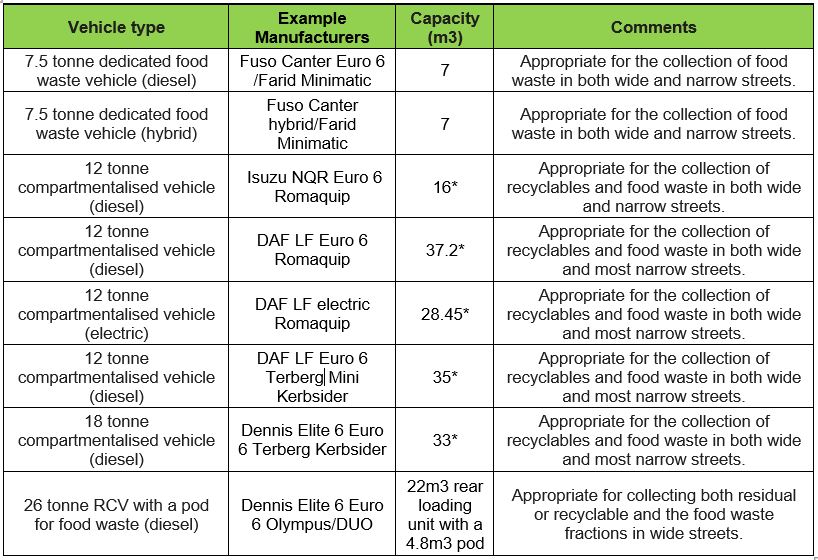It’s the topic on everyone’s lips, what is the best way to collect food waste in terms of vehicle choices and how to fuel them. It is definite food for thought (I will try and stop the puns now), not least because food waste collections can be inefficient (the vehicles often don’t get full) and also the vehicles will shortly be collecting from every household in the country, every week, meaning more resource recovery but also local air quality impacts for a high profile new public service.
What about the development of lower emission vehicles? To an extent it has lagged behind the larger Refuse Collection Vehicles as the core market within the sector, however only this week we heard about potential innovation using electric ‘cargo bikes’ being explored in Herefordshire. What would be the appetite for these alternatives? For starters, I imagine that whilst it would save substantially on capital costs it would be very costly in labour terms, as the bikes would fill quickly and reach a weight limit very fast, food waste being heavy, meaning a return to tip before returning to collect from the next part of a round.

The most common vehicle options used by industry are starting to see electric or hybrid alternatives coming onto the market. There is also the potential to use drop in fuels (e.g. HVO) or retrofit larger RCVs with hydrogen combustion systems, both being subject to the ‘Whole Vehicle Type Approval’ by the truck manufacturer.
Smaller 7.5 tonne
So, what is the best take away from this article, I hope I have given a fair summary of the most common vehicle types available, and the most appropriate in our view being the smaller 7.5 tonne vehicle for a dedicated collection or inclusion of food waste on a compartmentalised recycling vehicle, where the recyclables are collected on a weekly basis, in this manner.
It should be recognised that certain things are off the menu: isn’t suitable to use a compartment on a twin pack RCV (due to differential loads / compaction aspects), or use a medium / small RCV, due to axle loadings / instability or to collect food waste with a caged vehicle / tipper due to potential spillage / leakage. But it feels as though there is room for further innovation in the sector, the e-bike is perhaps an extreme, albeit interesting, example. There may also be light goods vehicle options, using low emission fuels that could be adapted to suit, what can sometimes be, sporadic collections and relatively low volumes of food waste.
Author
Frith Resource Management is an independent consultancy with a specialist team that undertakes collection modelling, procurement and waste strategy work and have modelled services in over 60 Councils in the UK. See www.frithrm.com or email paul@frithrm.com

Aimed at anybody involved in municipal waste collection, this conference addresses the big issues facing the sector; including sector outlooks, contamination and quality case studies, service changes and vehicle developments along with a panel discussion on the path forward for collections.
For more information and to get your ticket, click here.







Subscribe for free